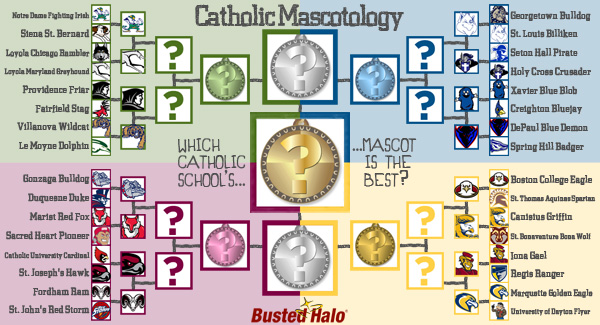It’s only Day Two and Catholic Mascotology might already have a scandal on its hands. It turns out a non-Catholic college not only made it into the tournament, but absolutely crushed its competition on day one, slyly advancing into today’s Round 2. The Marist Red Fox outsmarted (not only us, but also) Sacred Heart’s “Big Red” the Pioneer and is now the only non-religiously affiliated school out of the sixteen remaining. Though Marist was established by the Marist Brothers in 1929, it transferred ownership in 1969 and is now non-affiliated, though several Marist brothers remain on campus. It looks like we may have a new underdog in this contest…
Speaking of dogs, they didn’t do too hot yesterday. Over half of the canines competing headed to a farm upstate, leaving only 3 remaining with us: the Loyola Maryland Greyhound (which goes head to head against the Notre Dame Leprechaun today); the Gonzaga Bulldog (the only remaining bulldog); and the aforementioned fox.
Meanwhile, the two and a half eagles that began in this tournament are still represented. The Boston College Eagle, the Marquette Golden Eagle and the Canisius Griffin (remember, he’s half an eagle, and apparently named “Petey”) all managed wins yesterday. Will the Iona Gael be able to handle himself and club away at the competition, or will tomorrow see more eagle on eagle action?
By far the closest of yesterday’s match-ups saw Xavier’s Blue Blob narrowly defeat the Creighton Blue Jay, winning by only 10 votes — remember those that skipped over questions, every vote does count. Today it’s another Blue vs. Blue battle as the Blue Blob takes on DePaul’s Blue Demon. The Blob does seem to be well liked by many, so this may very well be the Blob’s race to lose.
The only Day One upset we witnessed involved what is possibly the weirdest creature participating in this contest, the St. Louis Billiken, who trounced the favored Georgetown Bulldog. The Billiken has its work cut out for it today, as it goes up against the Holy Cross Crusader. Be careful, Billiken, as someone pointed out to us, “you know how it goes with crusaders…one moment it’s, ‘rah, rah, rah, go team, let’s reclaim the true cross and make Jerusalem safe for believers,’ and five minutes later they are sacking and pillaging Byzantium.”
Once again, may the Best Mascot win! Scroll below to read up and vote on your favorite Catholic mascot.
The competitors:
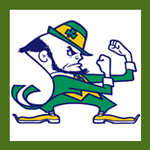 The Notre Dame Fighting Irish: By far the most recognizable name in this tournament, Notre Dame itself doesn’t know the definitive origin of its mascot. While two different stories attribute the name “Fighting Irish” to nasty remarks made by the opposing sides during football games, the more widely accepted origin traces the “Fighting Irish” back to press coverage of Notre Dame athletics in the 1920s. Additionally, the mascot position was originally held by a series of Irish Terriers, a tradition that began in 1930 and lasted until the Fighting Irish Leprechaun took over as the primary mascot in 1965.
The Notre Dame Fighting Irish: By far the most recognizable name in this tournament, Notre Dame itself doesn’t know the definitive origin of its mascot. While two different stories attribute the name “Fighting Irish” to nasty remarks made by the opposing sides during football games, the more widely accepted origin traces the “Fighting Irish” back to press coverage of Notre Dame athletics in the 1920s. Additionally, the mascot position was originally held by a series of Irish Terriers, a tradition that began in 1930 and lasted until the Fighting Irish Leprechaun took over as the primary mascot in 1965.
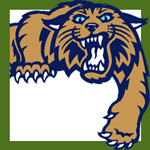 The Villanova Wildcat: Villanova’s Wildcats have been around since 1926, when a university-wide contest selected the mascot. Since then, the Wildcats have represented Villanova in a variety of sports (the teams at various points bearing alternate titles like “Trackcats,” “Watercats,” and “Polocats.”) From 1930 to 1950, Villanova was in possession of a live wildcat that would be brought out for football games, a practice that was (thankfully!) abolished because of the feisty behavior of the animals. Since 1950, the mascot “Will D. Cat” has graced the sidelines at Villanova athletic events.
The Villanova Wildcat: Villanova’s Wildcats have been around since 1926, when a university-wide contest selected the mascot. Since then, the Wildcats have represented Villanova in a variety of sports (the teams at various points bearing alternate titles like “Trackcats,” “Watercats,” and “Polocats.”) From 1930 to 1950, Villanova was in possession of a live wildcat that would be brought out for football games, a practice that was (thankfully!) abolished because of the feisty behavior of the animals. Since 1950, the mascot “Will D. Cat” has graced the sidelines at Villanova athletic events.
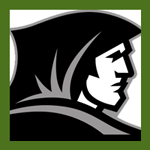 The Providence Friar: Originally the Friars’ mascot wasn’t even a friar — he was a Dalmatian by the name of “Friar of What-Ho” purchased by the Friars Club and brought to games beginning in 1935. This was in keeping with the Dominicans’ nickname as “watchdogs of the Lord” as Providence is the only college in North America run by the Dominican order. After the 1963 death of the fourth Dalmatian Friar, Providence decided on a more human representation. Since then, they’ve had an actual Friar mascot, with a brief retreat between 1993-2001 when a Dalmatian once again served in honor of the school’s 75th anniversary.
The Providence Friar: Originally the Friars’ mascot wasn’t even a friar — he was a Dalmatian by the name of “Friar of What-Ho” purchased by the Friars Club and brought to games beginning in 1935. This was in keeping with the Dominicans’ nickname as “watchdogs of the Lord” as Providence is the only college in North America run by the Dominican order. After the 1963 death of the fourth Dalmatian Friar, Providence decided on a more human representation. Since then, they’ve had an actual Friar mascot, with a brief retreat between 1993-2001 when a Dalmatian once again served in honor of the school’s 75th anniversary.
 The Loyola Maryland Greyhound: The Greyhound, known to be a fierce and fast dog, is the mascot of Loyola University Maryland. The mascot has been portrayed throughout the years by both live greyhounds (the last one, Nicholas III, retired in 2011) and a costumed-mascot, Iggy. The Greyhounds are best known for their men and women’s winning lacrosse teams, honoring their mascot by being both fierce and fast.
The Loyola Maryland Greyhound: The Greyhound, known to be a fierce and fast dog, is the mascot of Loyola University Maryland. The mascot has been portrayed throughout the years by both live greyhounds (the last one, Nicholas III, retired in 2011) and a costumed-mascot, Iggy. The Greyhounds are best known for their men and women’s winning lacrosse teams, honoring their mascot by being both fierce and fast.
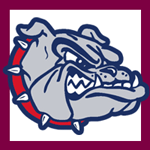 The Gonzaga Bulldog: In the 1910s, Gonzaga was known as “The Fighting Irish” (watch out, Notre Dame)! It wasn’t until 1921 when a reporter compared them to tenacious bulldogs that the canine foundation was laid. For roughly 60 years, numerous live bulldogs were used to scare away the competition until in 1980 a student donning a cape and calling himself “Captain Zag” took over the reigns. In 1985, the Bulldog was reintroduced as a costumed mascot who, better known as “Spike,” constantly competes for fame with the unofficial other name for Gonzaga’s students, teams, and fans who are frequently referred to as “Zags.”
The Gonzaga Bulldog: In the 1910s, Gonzaga was known as “The Fighting Irish” (watch out, Notre Dame)! It wasn’t until 1921 when a reporter compared them to tenacious bulldogs that the canine foundation was laid. For roughly 60 years, numerous live bulldogs were used to scare away the competition until in 1980 a student donning a cape and calling himself “Captain Zag” took over the reigns. In 1985, the Bulldog was reintroduced as a costumed mascot who, better known as “Spike,” constantly competes for fame with the unofficial other name for Gonzaga’s students, teams, and fans who are frequently referred to as “Zags.”
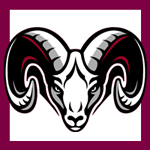 The Fordham Ram: Born out of a vulgar 1893 cheer (“One-damn, two-damn, three-damn, Fordham!”), “Ramses the Ram” has a history that is dramatic, sordid, and at times, quite disturbing. The Jesuit establishment soon changed the utterance to the more tolerable “ram,” which became the official mascot in 1905. Even though the Ram appeared in an illustrated format in 1918, its true heyday began in 1925 when the first living ram, Ramses I, was “borrowed” from a nearby farm by a group of Fordham students. For 44 years, 21 living rams took the name Ramses, but not without some unexpected occurrences along the way. In 1934, one of the Ramses was brutally murdered by SMU’s mascot, Peruna I, a black Shetland pony, who killed poor Ramses instantly with a swift kick to the head. Costumed mascots began portraying the Ram as early as 1963, and in 2009 one of them was punched in the face in the school cafeteria by a fellow student who then cowardly ran away. The Ram proceeded to chase down the student, bringing justice to the student’s face via a knuckle sandwich. Most recently, a Ram named “Buster” returned as the 22nd living incarnation of the mascot, if only for a day, to don Ramses attire and lift school spirits once again.
The Fordham Ram: Born out of a vulgar 1893 cheer (“One-damn, two-damn, three-damn, Fordham!”), “Ramses the Ram” has a history that is dramatic, sordid, and at times, quite disturbing. The Jesuit establishment soon changed the utterance to the more tolerable “ram,” which became the official mascot in 1905. Even though the Ram appeared in an illustrated format in 1918, its true heyday began in 1925 when the first living ram, Ramses I, was “borrowed” from a nearby farm by a group of Fordham students. For 44 years, 21 living rams took the name Ramses, but not without some unexpected occurrences along the way. In 1934, one of the Ramses was brutally murdered by SMU’s mascot, Peruna I, a black Shetland pony, who killed poor Ramses instantly with a swift kick to the head. Costumed mascots began portraying the Ram as early as 1963, and in 2009 one of them was punched in the face in the school cafeteria by a fellow student who then cowardly ran away. The Ram proceeded to chase down the student, bringing justice to the student’s face via a knuckle sandwich. Most recently, a Ram named “Buster” returned as the 22nd living incarnation of the mascot, if only for a day, to don Ramses attire and lift school spirits once again.
 The Marist Red Fox: The Red Foxes get their name from the intelligent and cunning animal native to the Hudson Valley where the school is located. The current Marist Red Fox, officially known as “Shooter,” was born in 1979 as the brainchild of a “local energetic high school sophomore.” Aside from supporting the students and athletes of Marist, “Shooter” is known to enjoy Mookies (Marist Red Fox Cookies), the comic antics of another Redd Foxx, and apparently getting into down and dirty dance contests with fellow Catholic Mascotology competitor, the Georgetown Bulldog.
The Marist Red Fox: The Red Foxes get their name from the intelligent and cunning animal native to the Hudson Valley where the school is located. The current Marist Red Fox, officially known as “Shooter,” was born in 1979 as the brainchild of a “local energetic high school sophomore.” Aside from supporting the students and athletes of Marist, “Shooter” is known to enjoy Mookies (Marist Red Fox Cookies), the comic antics of another Redd Foxx, and apparently getting into down and dirty dance contests with fellow Catholic Mascotology competitor, the Georgetown Bulldog.
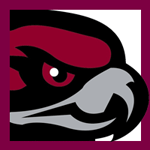 The St. Joseph’s Hawk: The St. Joseph’s Hawk has been called the Atlantic 10 Conference’s “Best Mascot.” The Hawk has been the mascot at St. Joe’s since 1929, but first flapped its wings in 1956 and hasn’t stopped since. The Hawk represents the school’s motto, “The Hawk Will Never Die,” by flapping its wings repeatedly through every basketball game, not even stopping during halftime (or the national anthem). On average the Hawk flaps its wings 3500 times during a game. This is no easy feat, which is why the one student chosen per year to portray the mascot receives a full scholarship.
The St. Joseph’s Hawk: The St. Joseph’s Hawk has been called the Atlantic 10 Conference’s “Best Mascot.” The Hawk has been the mascot at St. Joe’s since 1929, but first flapped its wings in 1956 and hasn’t stopped since. The Hawk represents the school’s motto, “The Hawk Will Never Die,” by flapping its wings repeatedly through every basketball game, not even stopping during halftime (or the national anthem). On average the Hawk flaps its wings 3500 times during a game. This is no easy feat, which is why the one student chosen per year to portray the mascot receives a full scholarship.
 The DePaul Blue Demon: How does the largest Catholic university in the United States end up with a demon as its mascot? The story is quite intriguing. In 1907, the school changed its name from St. Vincent’s University to DePaul, simultaneously changing the sports teams’ uniforms to feature a large letter “D” on the front. When opposing teams began to refer to DePaul’s players as “D-men,” the nickname quickly changed to “demon,” and eventually was adopted by the university. The mascot itself first appeared in 1968, and is often referred to as “DIBS” (for “Demon in a Blue Suit”).
The DePaul Blue Demon: How does the largest Catholic university in the United States end up with a demon as its mascot? The story is quite intriguing. In 1907, the school changed its name from St. Vincent’s University to DePaul, simultaneously changing the sports teams’ uniforms to feature a large letter “D” on the front. When opposing teams began to refer to DePaul’s players as “D-men,” the nickname quickly changed to “demon,” and eventually was adopted by the university. The mascot itself first appeared in 1968, and is often referred to as “DIBS” (for “Demon in a Blue Suit”).
 The Xavier Blue Blob: Despite sharing official mascot status for Ohio’s Xavier University with D’Artagnan the Musketeer, the Blue Blob stands alone as the third seed in his region. Though a seemingly innocent, well, blob, Xavier’s mascot has some edge — he was accidentally tackled by Xavier basketball fan Theo Nelson in 2002, which skyrocketed the Blob to fame, landing him appearances in commercials for ESPN and Skyline Chili and even a featured interview in Playboy. (Don’t ask.)
The Xavier Blue Blob: Despite sharing official mascot status for Ohio’s Xavier University with D’Artagnan the Musketeer, the Blue Blob stands alone as the third seed in his region. Though a seemingly innocent, well, blob, Xavier’s mascot has some edge — he was accidentally tackled by Xavier basketball fan Theo Nelson in 2002, which skyrocketed the Blob to fame, landing him appearances in commercials for ESPN and Skyline Chili and even a featured interview in Playboy. (Don’t ask.)
 The Holy Cross Crusader: A founding member of New England’s Patriot League, Holy Cross holds an important place in college athletics, and its Crusaders form the proud face of that position. The name came about officially in 1925 when, following an article that referred to the Holy Cross baseball team as “crusaders,” the school paper took a vote between “Crusaders” and the two other mascot names in use, “Chiefs” and “Sagamores.” “Crusaders” won by a landslide, toppling the other two names by more than 100 votes. Thank goodness for that!
The Holy Cross Crusader: A founding member of New England’s Patriot League, Holy Cross holds an important place in college athletics, and its Crusaders form the proud face of that position. The name came about officially in 1925 when, following an article that referred to the Holy Cross baseball team as “crusaders,” the school paper took a vote between “Crusaders” and the two other mascot names in use, “Chiefs” and “Sagamores.” “Crusaders” won by a landslide, toppling the other two names by more than 100 votes. Thank goodness for that!
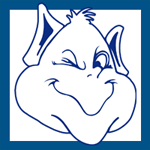 The St. Louis Billiken: First off, what is a billiken? Essentially, it’s best described as a cross between a pixie and an elf. According to an article from St. Louis University publication “Universitas,” the billiken is “The god of things as they ought to be,” a little imp who brought its owner luck — good luck if bought, better luck if received as a gift, and the best luck if stolen! Though seeded last in its region, maybe the Billiken can bring St. Louis some luck in this tournament and pull out a surprise victory. (Who knows? It did previously claim the #1 spot as the lamest college mascot.)
The St. Louis Billiken: First off, what is a billiken? Essentially, it’s best described as a cross between a pixie and an elf. According to an article from St. Louis University publication “Universitas,” the billiken is “The god of things as they ought to be,” a little imp who brought its owner luck — good luck if bought, better luck if received as a gift, and the best luck if stolen! Though seeded last in its region, maybe the Billiken can bring St. Louis some luck in this tournament and pull out a surprise victory. (Who knows? It did previously claim the #1 spot as the lamest college mascot.)
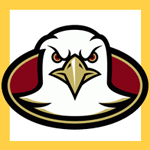 The Boston College Eagle: Who knew the impetus behind “Baldwin,” the American bald eagle that serves as the official mascot for Boston College, was an old man writing an angry letter? Upset at reading a local Boston newspaper cartoon in 1920 featuring his alma mater as an innocently drawn cat, loyal alum Fr. Edward J. McLaughlin angrily wrote to the college newspaper insisting the school draft an appropriate mascot. “And why not the Eagle, symbolic of majesty, power, and freedom?” Why not, indeed? The idea of the Eagle stuck and has since been incarnated in several different manifestations including a few live eagles (all who met with untimely ends), a stuffed eagle, a gilded bronze sculpture, and a costumed mascot. Unfortunately, the most recent appearance of a once-again live eagle “Baldwin” has troubled the good people of PETA. Despite this, could the B.C. Eagle end up winning Catholic Mascotology — why not?
The Boston College Eagle: Who knew the impetus behind “Baldwin,” the American bald eagle that serves as the official mascot for Boston College, was an old man writing an angry letter? Upset at reading a local Boston newspaper cartoon in 1920 featuring his alma mater as an innocently drawn cat, loyal alum Fr. Edward J. McLaughlin angrily wrote to the college newspaper insisting the school draft an appropriate mascot. “And why not the Eagle, symbolic of majesty, power, and freedom?” Why not, indeed? The idea of the Eagle stuck and has since been incarnated in several different manifestations including a few live eagles (all who met with untimely ends), a stuffed eagle, a gilded bronze sculpture, and a costumed mascot. Unfortunately, the most recent appearance of a once-again live eagle “Baldwin” has troubled the good people of PETA. Despite this, could the B.C. Eagle end up winning Catholic Mascotology — why not?
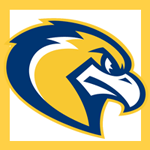 The Marquette Golden Eagle: One of two and a half eagles featured in Catholic Mascotology, the Marquette Golden Eagle has only been around since 1994 when the school decided to re-imagine its mascot into a less controversial entity than the previously named “Warrior.” The Golden Eagle, proud to be part of the first co-ed Catholic university in the world (beginning in 1909 when women were finally allowed to enroll) has spent his brief 19 years supporting his teams, fighting off another would-be-mascot usurper, and apparently refusing interviews. The question remains, does he have what it takes to soar to the top of this bracket?
The Marquette Golden Eagle: One of two and a half eagles featured in Catholic Mascotology, the Marquette Golden Eagle has only been around since 1994 when the school decided to re-imagine its mascot into a less controversial entity than the previously named “Warrior.” The Golden Eagle, proud to be part of the first co-ed Catholic university in the world (beginning in 1909 when women were finally allowed to enroll) has spent his brief 19 years supporting his teams, fighting off another would-be-mascot usurper, and apparently refusing interviews. The question remains, does he have what it takes to soar to the top of this bracket?
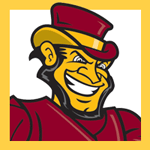 The Iona Gael: The Iona Gael makes a great would-be contender for a possible face-off with the Notre Dame Irish Man, as the Iona sports website defines a Gael as “anyone of Irish-Gaelic ancestry.” They go on to say that their Gael is a spunky character who is consistent with the school’s motto of “fight the good fight.” He certainly is, what with that disconcerting smile and awfully big wooden club he carries around. Don’t forget to show your support of the Iona Gael’s chances in Catholic Mascotology by purchasing this giant inflatable Gael (sans wooden club).
The Iona Gael: The Iona Gael makes a great would-be contender for a possible face-off with the Notre Dame Irish Man, as the Iona sports website defines a Gael as “anyone of Irish-Gaelic ancestry.” They go on to say that their Gael is a spunky character who is consistent with the school’s motto of “fight the good fight.” He certainly is, what with that disconcerting smile and awfully big wooden club he carries around. Don’t forget to show your support of the Iona Gael’s chances in Catholic Mascotology by purchasing this giant inflatable Gael (sans wooden club).
 The Canisius Golden Griffin: Half lion, half eagle, the mighty Griffin allows Canisius College two mascots in one. Though, one has to wonder about the theological implications of a Catholic school using an ancient Greek mythological figure as its mascot? However, further research actually proves it’s quite logical: in medieval times the Griffin was an emblem of the Church’s view of marriage since the animals were said to mate for life and stay faithful to their beloved even after the other had died. Furthermore, being a beast of both the land and the air, it was seen in Christendom as a symbol of Jesus — both human and divine.
The Canisius Golden Griffin: Half lion, half eagle, the mighty Griffin allows Canisius College two mascots in one. Though, one has to wonder about the theological implications of a Catholic school using an ancient Greek mythological figure as its mascot? However, further research actually proves it’s quite logical: in medieval times the Griffin was an emblem of the Church’s view of marriage since the animals were said to mate for life and stay faithful to their beloved even after the other had died. Furthermore, being a beast of both the land and the air, it was seen in Christendom as a symbol of Jesus — both human and divine.
